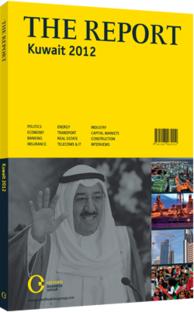OBG talks to Farouk Al Zanki, CEO, Kuwait Petroleum Corporation (KPC)

Interview: Farouk Al Zanki
How has the Gulf of Mexico spill affected the industry’s approach to innovative drilling?
FAROUK AL ZANKI: Drilling safety will likely be improved further, and everyone will be especially careful in the wake of the BP Macondo well blowout. The Gulf of Mexico disaster has also pushed more regulations to be implemented and more innovative drilling applications will be introduced. The industry is known for its ability to adapt quickly to meet future challenges and demand. However, the costs of new regulations are going to add expenses to the exploration and production process, both in manpower and in equipment. More manpower will be needed for regulatory filings, especially regarding oil spill response plans. This may affect the ability of companies to explore for difficult reserves. The Gulf of Mexico spill will unquestionably lead to improved safety of wells, but there is uncertainty regarding the standards that will be required going forward.
What is being done to meet capacity requirements for refined products in peak months?
AL ZANKI: Kuwait National Petroleum Corporation operates the country’s three refineries, which together can process 930,000 barrels per day (bpd). Kuwait plans to build a fourth refinery and upgrade the two refineries at Mina Al Ahmadi and Mina Abdulla as a means of meeting future demand. The main objectives of the new refinery project will be to produce 225,000 bpd of low-sulphur fuel oil to supply power generation plants in Kuwait and to meet strategic national objectives for the improvement of air quality by reducing emissions. The new refinery will be able to process Kuwait export, medium and heavy grade crude oils.
The clean fuel project envisages radical upgrades of the Mina Al Ahmadi and Mina Abdulla refineries with the goal of creating an integrated refining complex with a total capacity of 800,000 bpd. It is considered a clean fuel project because it will supply environmentally friendly petroleum products to the market. In July 2011 Kuwait’s Supreme Petroleum Council approved the construction of the long-awaited refinery, which is expected to start operations in 2016.
What are Kuwait’s most significant needs in terms of know-how and technology transfer?
AL ZANKI: We are living in a global world where cooperation is the formula for improving competitiveness and achieving mutual benefits. We have the oil reserves, and the international oil companies (IOCs) have the technology and the know-how, which they are willing to share to help us meet our strategic objectives. Within this understanding, mutual cooperation and coordination with the IOCs will be strengthened for the benefit of both sides in a win-win situation.
We are happy with the existing arrangements that we have for training in the upstream and downstream sectors. These will be enhanced with further agreements with major oil and service companies that operate in Kuwait as well as abroad. Additionally, we are planning an integration of the oil sector, whereby all upstream companies will work under one umbrella, which should ensure optimal usage of resources and expertise within the oil sector, as well as an effective means of sharing experience and know-how.
To what extent is Kuwait involved in overseas refining? Do you expect this to increase in coming years?
AL ZANKI: The plan is to build refining capacity in China and Vietnam. This will strengthen Kuwait’s role as a global and regional centre for hydrocarbons. In Vietnam, participation by Kuwait Petroleum International (KPI) and KPC in the Nghi Son refinery represents the first successful step in the implementation of the KPC/KPI long-term downstream strategy in Asia. The downstream joint ventures strategy is important for main industry players and KPC’s 2030 development strategy places special focus on downstream activities.
In China, KPC is also making significant progress on an integrated project to build a refinery and petrochemicals plants in the southern Guangdong province.
You have reached the limit of premium articles you can view for free.
Choose from the options below to purchase print or digital editions of our Reports. You can also purchase a website subscription giving you unlimited access to all of our Reports online for 12 months.
If you have already purchased this Report or have a website subscription, please login to continue.

